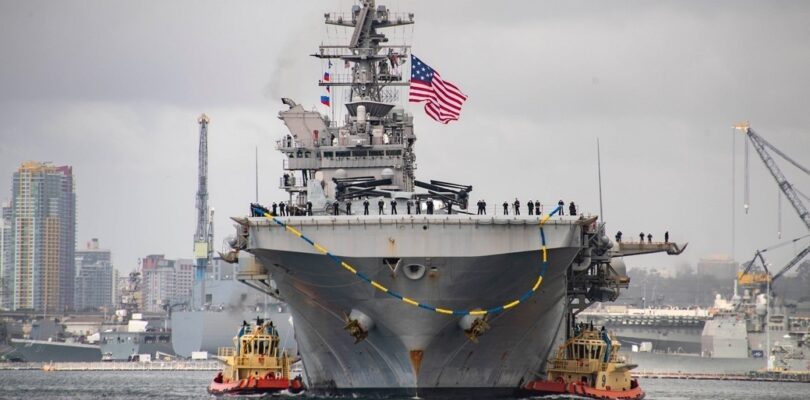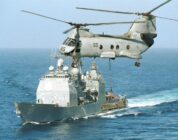The U.S. Navy’s newest America-class amphibious assault ship arrived at its new homeport in Sasebo, Japan, on Monday as part of a regularly scheduled rotation of forces aimed at bolstering security in the Indo-Pacific region, the Navy announced.
The Tripoli forward deployed from Naval Base San Diego, California, on May 19, and will operate as part of U.S. 7th Fleet. It will replace the first-in-class amphibious assault ship America, which originally docked in Sasebo on Dec. 6, 2019, as the latter makes its way back to Naval Base San Diego.
“The Tripoli is ready to defend U.S. interests abroad and strengthen our long-standing partnership with Japan,” said Capt. Eddie Park, commanding officer of the Tripoli. “I am extremely proud to lead this hard-working and motivated team of Sailors and Marines overseas to support security, stability and prosperity in this vital region.”
Navy amphibious assault ships — unlike aircraft carriers, which operate as mobile airbases and deploy fighter jets and bombers over long distances — are designed to fortify expeditionary operations ashore, assisting in the deployment of ground forces and their equipment.
Marine Corps eyes future stability of Indo-Pacific with Balikatan 2025
The U.S. has continued to express a vested interest in providing security to the Indo-Pacific region, with Defense Secretary Pete Hegseth casting the area as the “priority theater” for U.S. military operations.
China’s military continues to ramp up its naval presence in the South and East China Seas, deploying a large number of naval and coast guard vessels to the region in May, according to multiple reports.
The Tripoli, commissioned July 15, 2020, was named after the U.S. Marine Corps’ victory against Tripoli at the Battle of Derna during the First Barbary War in 1805. It is the Navy’s second America-class amphibious assault ship.
Tripoli’s maiden voyage began in May 2022, when it deployed to the Western Pacific and operated a record number of F-35B Lightning II joint strike fighter jets in order to exercise the Marine Corps’ “lightning carrier” concept for the first time ever on an amphibious assault ship. The “lightning carrier” test — which featured 20 F-35B Lightning II jets — gauged the smaller ship’s ability to accomplish missions reminiscent of its larger aircraft carrier counterparts.




